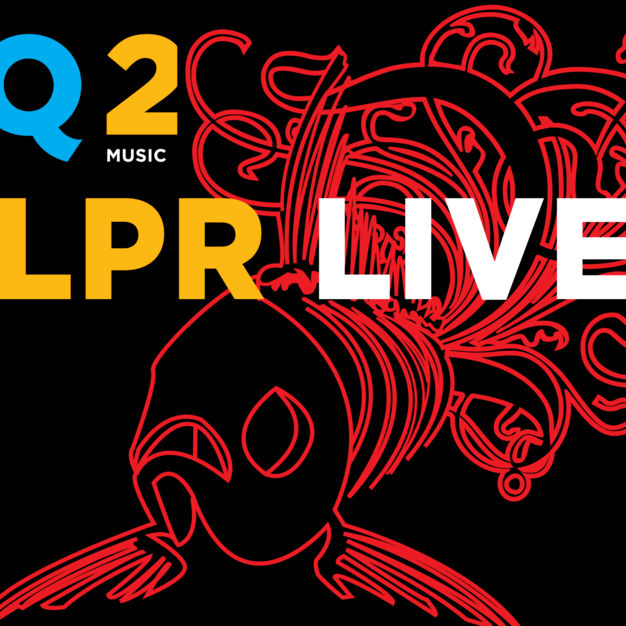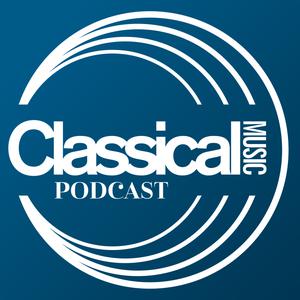
My Classical Podcast
WQXR
WQXR's Jeff Spurgeon hosts this unique classical music podcast which introduces a featured classical recording in each episode. Recordings are drawn from several label catalogs, including hot new releases and classic accounts, plus performances from the W
- 13 minutes 49 secondsDownload Schumann’s 'Spring' Symphony No. 1 in B flat major, Op. 38
Symphony No. 1 in B flat major, Op. 38 "Spring" Robert Schumann Philharmonia OrchestraRiccardo Muti, ConductorAvailable on Arkivmusic.com
When it’s winter, we long for spring. So it makes sense that great music about spring would be written in winter, when we need it most. Maybe spring fever was part of the reason Robert Schumann was able to sketch out his Symphony No.1, the “Spring” Symphony, over just four days in January of 1841. And he did all the orchestration in a three-week space that February. Something we know inspired Schumann was a poem by German writer Adolph Böttger. How inspiring was this poem? Here are two lines from the last stanza of Böttger’s poem: “O wende, wende deinen Lauf/Im Thale blüht der Frühling auf!" (“O, turn, O turn and change your course/In the valley, Spring blooms forth.") But listen to how those German words and the opening notes of Schumann’s symphony go together. Schumann scored those words, didn’t he? Schumann gave spring-themed titles to each of the four movements in this symphony: “The Beginning of Spring,” “Evening,” “Merry Playmates” and “Spring in Full Bloom.” He took the titles out before the symphony was published, but the work remains Schumann’s “Spring” Symphony. Here is the first movement, played by the Philharmonia Orchestra, conducted by Riccardo Muti.Episodes of My Classical Podcast are available for download through the WQXR App. Download it for IOS and Android Devices.
- How to use the
6 April 2015, 4:00 am - 4 minutes 22 secondsFelix Mendelssohn's 'Spring Song,' Performed by Pianist Daniel Adni
'Frühlingslied' ('Spring Song')Felix Mendelssohn Daniel Adni, pianoAvailable on Arkivmusic.com
Among all the great works written by Felix Mendelssohn are five dozen piano pieces with sort of a weird title: Songs Without Words. Now, is that some kind of game of fill in the blank? If they’re without words, why not put words to them? Well, it turns out that Mendelssohn answered that question.
In a letter, Mendelssohn said that some people complain that music is unclear to them; they don’t understand its meaning, and words would make the meaning clearer. But Mendelssohn said this: “What the music I love expresses to me, is not too indefinite to put into words, but too definite.” (Pretty deep!) Something to think about, though – a meaning too definite to put into words.
Now, the most famous of Mendelssohn’s Songs Without Words, does have, at least, a title: "Frühlingslied" ("Spring Song"). And you know this song, too. You’ve heard it a million times in cartoons and movies, but it’s almost always used to make fun of something. The tune has become a joke, a cliché, and I think that’s unfair. I think this "Spring Song" deserves a little reprieve. So here’s the whole thing. And as you listen, put aside whatever silly images come into your head, and just let the song be itself. And maybe the definite, wordless meaning will be as clear to you as it was to its composer. This performance is by pianist Daniel Adni.
Episodes of My Classical Podcast are available for download through the WQXR App. Download it for IOS and Android Devices.
- How to use the
3 April 2015, 4:00 am - 9 minutesFrederick Delius's 'On Hearing the First Cuckoo in Spring,' Played By Halle Orchestra
On Hearing the First Cuckoo in SpringFrederick DeliusHalle Orchestra; Sir John Barbirolli, conductorAvailable on Arkivmusic.com
We all look for signs of spring. Some, such as daffodils and crocuses in bloom, are welcome. Others – the watery, itchy eyes from all that pollen, and the sound of your car hitting all those potholes – not so much. One of the good sounds of spring is birdsong. The song of the cuckoo is a particularly significant spring totem. Has been for centuries. There are all kinds of legends about hearing the first cuckoo of the year. Depending on where you are or what you’re doing, the first cuckoo’s song is supposed to be able to tell your fortune, including how many years you have left to live.
We don’t know why the cuckoo has all that power. Maybe it’s because it’s a little bit mysterious. Cuckoos are easy to hear, but not very easy to spot. Frederick Delius accorded the cuckoo a special honor by writing a symphonic poem about it. Delius was born in England to German immigrant parents. He wrote this piece when he was living in France, and based some of the music on a folk song from Norway that Grieg had arranged. German roots, French residence, Norwegian tune – but when Delius adds them up, they turn into something that sounds very English. Listen for the cuckoo in this piece. You won’t even hear him coming, but when he arrives, it’ll be a nice surprise, like any other welcome sign of spring. John Barbirolli conducts the Halle Orchestra.
Episodes of My Classical Podcast are available for download through the WQXR App. Download it for IOS and Android Devices.
- How to use the
1 April 2015, 4:00 am - 3 minutes 35 secondsMozart's 'Longing for Springtime,' Sung by Elisabeth Schwarzkopf
'Sehnsucht nach dem Frühling' (Longing for Springtime)Wolfgang Amadeus MozartElisabeth Schwarzkopf, vocalistWalter Gieseking, pianoAvailable on Arkivmusic.com
When we’re tired of winter, we long for spring, and even more so on days when it says spring on the calendar, but still feels like winter outdoors. Well, here’s a Mozart song for those days when it’s still not spring yet. It’s even called “Longing for Springtime.”
Mozart listed this little piece in the notebook of his compositions dated January 14, 1791. It was one of three tunes he cataloged on that winter day – all of them written for children. Now, the music is by Mozart, but not the words. They were written by a German poet, Christian Overbeck, and were published ten years before Mozart finished the song. The first line of the poem is, “Come, dear May, and make the trees green again!” The second verse admits that winter has its charms: snowy walks, sleigh rides, card games in the house. (A very mature point of view for a children’s song, I think.)
But the third verse pleads again for the return of mild weather and flowers and birds. Mozart wrote a charmer of a tune for it, so good he changed it up a little bit and used it as the theme of the last movement of his Piano Concerto No. 27. Here’s the song version now, sung by Elizabeth Schwarzkopf, with Walter Gieseking playing the piano.
Episodes of My Classical Podcast are available for download through the WQXR App. Download it for IOS and Android Devices.
- How to use the
26 March 2015, 4:00 am - 11 minutes 59 secondsVivaldi's 'La primavera' (Spring) from the <em>Four Seasons</em>
Four Seasons: La primavera (Spring), Op. 8/1Antonio VivaldiChiara Banchini, violinTaverner PlayersAndrew Parrott, conductorAvailable on Arkivmusic.com
Spring is here! We wonder how long human beings have been saying that. Long before we had words for Spring, or knew we were human beings, probably. The realization is a primal joy. Some of the most famous classical music for spring is by Vivaldi, from his set of four concertos, La Quattro Stagione – The Four Seasons. The first of them is Spring, la primavera. That’s a wonderful Italian word. Prima vera: “first green.” You need at least six musicians to play the piece according to Vivaldi’s score: a solo violin, a string quartet and a keyboard – organ or harpsichord. The Four Seasons concertos each have three movements, and are what is sometimes called program music – there’s a story being told, or a picture being painted. The pictures aren’t painted in just music, either.
Each of the Four Seasons concertos comes with a little sonnet. Nobody knows who wrote the sonnets; it might have been Vivaldi. Here's the Spring sonnet for the first movement: “Spring is here. The birds celebrate her return with festive song, and murmuring streams are softly caressed by zephyrs. Thunderstorms, those heralds of Spring, roar, casting their dark mantle over heaven, then they die away to silence, and the birds resume their charming songs.”
The second movement paints this picture: “On the flower-strewn meadow, with leafy branches rustling overhead, the goat-herd sleeps, his faithful dog beside him.” And the third movement: “Led by the festive sound of rustic bagpipes, nymphs and shepherds lightly dance beneath the brilliant canopy of Spring.”
This performance of Vivaldi’s Four Seasons: La primavera (Spring), Op. 8/1 features the violinist Chiara Banchini and the Taverner Players conducted by Andrew Parrott.
Episodes of My Classical Podcast are available for download through the WQXR App. Download it for IOS and Android Devices.
- How to use the
20 March 2015, 4:00 am - 7 minutes 23 secondsEpisode 5: 'O Magnum Mysterium', by the Cathedral Choir of St. John the Divine
O Magnum Mysterium (O Wondrous Mystery)Arr. by Morten LauridsenChoir of the Cathedral of St. John the DivineConducted by Kent Tritle
The nativity scene is one of the oldest and richest images of Christmas: Mary and Joseph with the newborn baby Jesus, whose maternity ward was a stable, because all the hotels in Bethlehem had their “no vacancy” signs out. And of course there are animals in that stable – a very unusual royal court for a very unusual king.
That is the image that has been contemplated literally for centuries in the monastic chant, O Magnum Mysterium – "O great mystery and wonderful sacrament" – that animals should see the newborn Lord lying in a manger. The words have been set by many choral composers, but one of the newest settings, from the early 1990s, is by composer Morten Lauridsen. The mystery and wonder of this nativity picture appear in the first chord the chorus sings, and the music has that particular quality of making time seem to stop. It’s terrific for a moment of contemplation, and it’s performed here by the Choir of the Cathedral of St. John the Divine in New York, conducted by Kent Tritle.
Episodes of My Classical Podcast are available for download through the WQXR App. Download it for IOS and Android Devices.
- How to use the
22 December 2014, 5:00 am - 8 minutes 30 seconds'Adorn Yourself, O Dear Soul' Live from WQXR's Bach Organ Marathon
We are pleased to be expanding what was 'My Daily Bach' into the new 'My Classical Podcast'. For this episode we feature “Adorn Yourself, O Dear Soul” Bach’s chorale prelude, BWV 654, played by Chelsea Chen at St. Peter’s Lutheran Church in New York City on November 22nd, 2014, as part of WQXR’s all-day Bach Organ Marathon. This piece is a slow and beautiful chorale prelude – one of a set of 17 or 18 works that Bach wrote and presumably performed during the nine years he was court organist in Weimar. Almost 25 years later, Bach returned to these works and put them into a single collection. The chorale – the hymn tune that everything is built around – is Schmuche dich, o meine Seele – Adorn Yourself, O Dear Soul – and the melody is highly decorated, in other words, the soul, adorned.
15 December 2014, 5:00 am - More Episodes? Get the App
Your feedback is valuable to us. Should you encounter any bugs, glitches, lack of functionality or other problems, please email us on [email protected] or join Moon.FM Telegram Group where you can talk directly to the dev team who are happy to answer any queries.
 LPR Live, from New York
LPR Live, from New York
 He Sang/She Sang
He Sang/She Sang
 Classical Music Podcast
Classical Music Podcast
 Classical 95.9-FM WCRI
Classical 95.9-FM WCRI
 Conducting Business
Conducting Business
 Café Concerts
Café Concerts